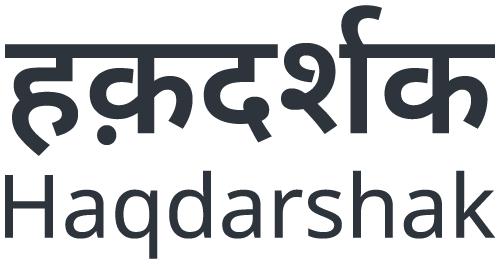Unlocking Opportunities:
An Analysis of the BOCW Card

By Dnyaneshwar Surwase
01 / Introduction
Vinod (40), from Lalitpur, UP, has been a construction worker for years. By carrying and transporting materials like cement and bricks, he has been able to support his family of 4. He applied for the BOCW Card in 2021 and thought this meant that he was covered by all the social protection schemes that he was eligible for.
What he did not know is that the BOCW Card enables access to up to 18 other social protection schemes, which range from educational assistance to medical support. So when his daughter got married in March 2023, he did not know that he was eligible for the Kanya Vivah Sahayata Yojana, which provides Cardholders with up to INR 55,000 to cover wedding expenses. Instead, he took out a loan.
Once our ‘Haqdarshak’ Veerbhan learned about this, he informed Vinod that, as a BOCW Cardholder, he could still apply for the scheme retroactively. So Veerbhan helped Vinod gather the documents he needed, and submit his scheme application in August 2023. By October 2023, he received the full benefit of INR 55,000.
Vinod’s story is not unique. While the BOCW Card is a comprehensive offering that aims to address the challenges faced by construction workers and enhance their economic and social well-being, there is a lack of awareness around what the Card can offer, and how to avail the maximum benefits. This article unpacks the BOCW Card’s offerings and its challenges in implementation
02 / The Numbers
As of 2023, the construction and real estate sector is the second-largest employment-generating sector in India. The sector employs approximately 71 million people, of which 81% are unskilled workers and 19% are skilled workers1.
In addition to low wages, extended work hours, and a lack of job security, construction workers also face persistent exposure to hazardous conditions. A workplace accident could potentially result in debilitating injuries, disabilities, or even death.
03 / The BOCW Act
The Building and Other Construction Workers (BOCW) Act, enacted in 1996, focuses on regulating the employment and service conditions construction workers face by ensuring social protection support for those in hazardous working environments.
The Act mandates each state government to establish a state-level BOCW Board and a BOCW Welfare Fund, and employers are required to pay a regulated BOCW Cess. This Cess is levied and collected at a rate not exceeding 2%, but not less than 1%, of the cost of construction by the State Governments. The States, through their respective State Building and Other Construction Workers Welfare Boards, utilize the Cess Fund for the welfare of the workers. The Act covers various worker categories, including unskilled, semi-skilled, skilled, and supervisory roles.
The registration process for the BOCW Card involves creating a login ID, submitting documents, and paying fees to obtain the BOCW Registration Certificate, which enables workers to access up to 18 state-specific social security schemes. This includes maternity benefits, medical assistance, accident cover, pension, educational and marriage assistance, family support in case of death, group insurance, loans, and funeral assistance.
State-Wise Registration Status, as of March 24, 2022

Source: Press Information Bureau Government of India
As per reports received from State and UT BOCW Welfare Boards.
04 / Challenges on the Ground
The BOCW Card is a complex form of social protection, and through our work, we have identified several structural issues that impact its on-ground implementation.
Under the Act, all States and UTs have initiated various schemes and direct benefit transfers to registered construction workers. There are, however, issues of cohort exclusions — for example, the Act does not consider unregistered workers, which consists of a significant population.
The BOCW eligibility age range is 18–60. Monali Sapkale, a Field Team Member in Palghar, Maharashtra, told us, “Some construction workers in the Vikramgad block of Palghar, Maharashtra are above the age of 60 and are the sole earners in their family. Due to the age rule, they cannot avail of the BOCW benefits”.
Similarly, ‘migrant workers’ face additional barriers in accessing the Card. “Some construction workers have to migrate for work, [so] they struggle to meet the 90-day work requirement for registration. Some contractors do not cooperate [and do not provide them with any work opportunities],” says Dilip Kumar, a Field Team Member in Delhi.
We have also identified issues with the lack of awareness around the BOCW Card’s application process, documentation requirements, and potential benefit access.
A mandatory document to apply for the BOCW Card is a form of residential proof, which some need help to provide. A respondent from Dharavi, Mumbai, said her house owner refused to provide her with a rental agreement, so she could not apply for the BOCW Card. The absence of a centralized registration system, and instead a system that has different processes across States and UTs, hampers the portability of welfare schemes.
BOCW Cards primarily function as identity cards. To avail the associated scheme benefits, one must submit separate applications for each. The schemes typically have varying criteria and require annual renewals, which poses difficulties for Cardholders.
The eligibility period for each associated scheme also varies. Some schemes are available to Cardholders immediately after receiving the card, such as safety kits, funeral assistance, and accident benefits, whereas Cardholders are only eligible for the benefits around educational and marriage assistance after the Card is renewed for the first time after 1 year. Finding accurate information on eligibility processes is difficult, as guidelines are often complex or inaccessible. For applicants, this creates confusion.
Additionally, the application system to avail of a BOCW Card is online and requires a login ID and password. Many potential applicants are not able to complete this process themselves, so are forced to rely on Grahak Sewa Kendra, contractors, or other third parties.
All of these factors contribute to a low uptake of BOCW Cards. While the documents and schemes exist, there is a challenge in the lack of awareness and information support.
05 / Haqdarshak's Work
Addressing these issues is crucial to ensure the social security of the informal labor force in India. Along with inadequacies in implementing the BOCW Act, there is a need to keep people informed and aware of their entitlements.
Mitigating these challenges requires a range of interventions, and may include the development of a centralized database (which is particularly helpful for ‘migrant workers’), the delivery of welfare schemes across states, the introduction of migration certificates, and the linking of BOCW Cards with universal schemes.
Critically, awareness of the BOCW Card, and the scheme linkages it entails, must be raised. Many eligible applicants are not aware of the BOCW Card, and some who are, are unable to complete the application process. Meanwhile, many Cardholders are unaware of the range of benefits the Card provides and do not avail all that they are eligible for.
Haqdarshak has held awareness sessions and enrolment camps for the BOCW Card in over 10 states, including Maharashtra, Rajasthan, Uttar Pradesh, and Madhya Pradesh. This involves mobilizing eligible applicants, informing them about the multi-faceted nature of the BOCW Card, and providing end-to-end application support.
To date, we have supported over 36,000 applicants, of which 29,502 have already received their BOCW Card and associated benefits.
For example, in the Lalitpur district of Uttar Pradesh, our field team has supported 4 BOCW cardholders receive retroactive marriage assistance benefits for their children, ranging from INR 50,000 to 55,000, just like Vinod.
“In our block, many construction workers didn’t get their BOCW card even after 2 years of application. But when our HDs intervened and supported them, they got it within 2-3 months. In the Vikramgad block of Palghar District, HDs supported 1500+ construction workers till January-February 2023, of which 1000 have already gotten their BOCW card. [Their] health checkups have been done, and 900 people have received their kits.” – Monali Sapkale, Fellow Vikramgad, Palghar District, Maharashtra.
06 / Additional Interventions
A key issue with the current usage of the BOCW Card, and the availing of its associated schemes, is the lack of awareness among Cardholders on which schemes they are eligible for. Given the range of eligibility timeframes across the associated schemes and the lack of accurate information available to applicants, there’s a significant underuse of the Card’s benefits.
The Yojana Card has the potential to fill this gap. The Yojana Card is designed to bridge the existing information gap around schemes and provide holders with customized, accurate information on scheme eligibility and application processes. Through the dual usage of the Yojana Card and BOCW Card, Cardholders will be able to make the most of the BOCW Card’s benefits.



